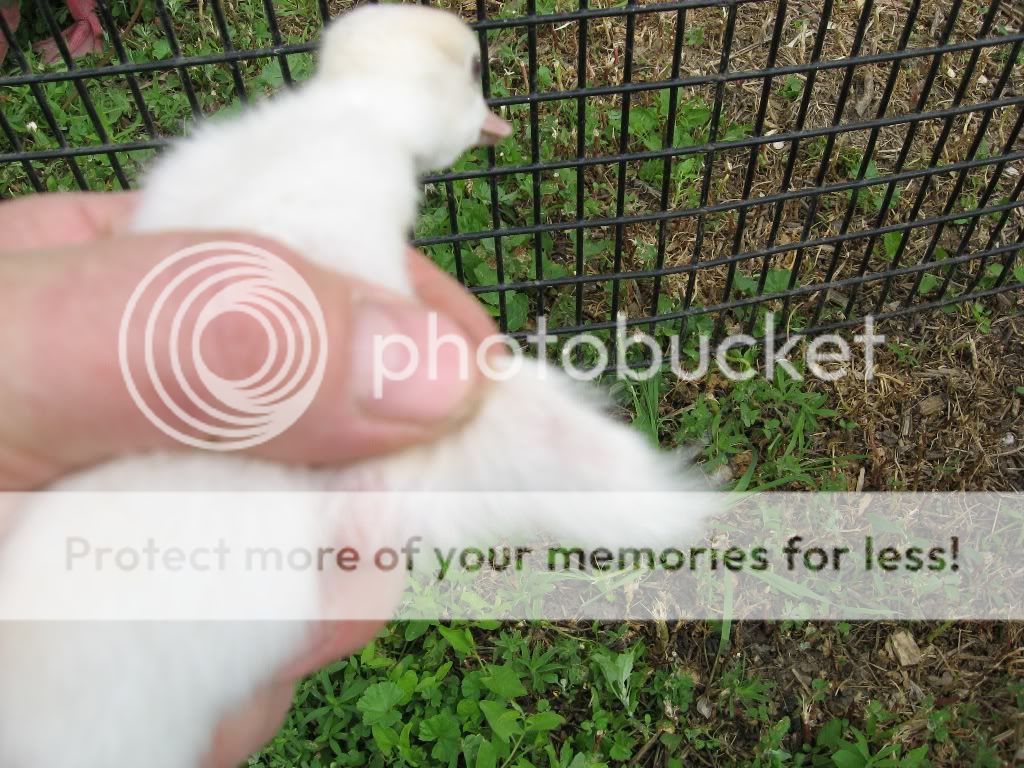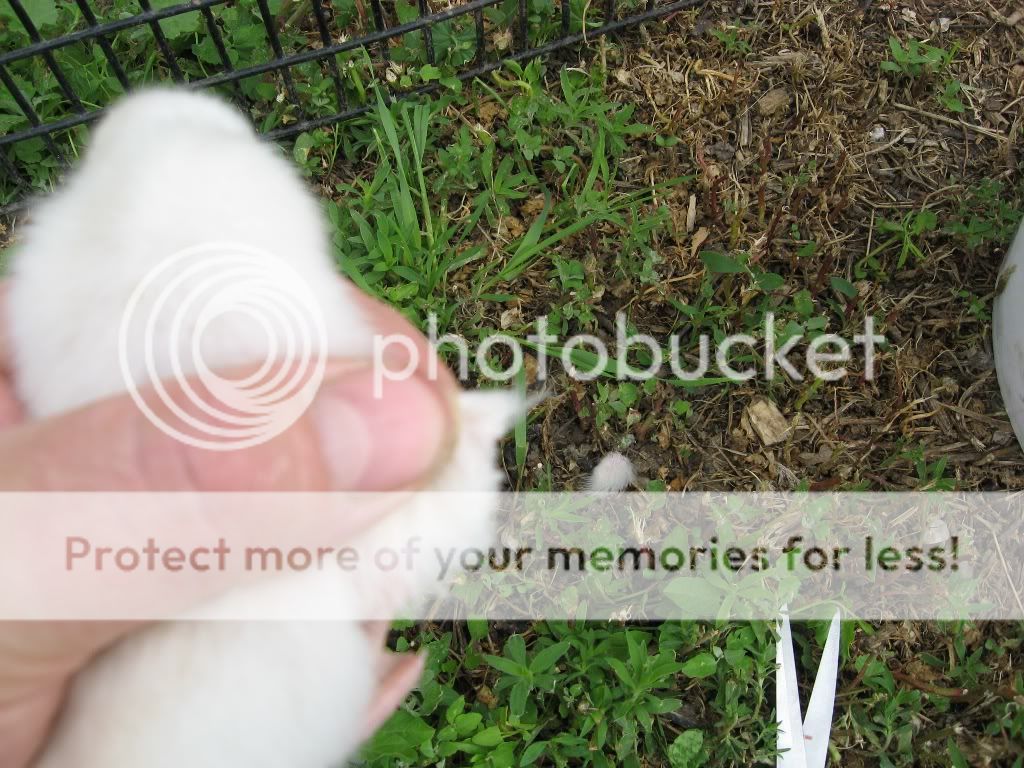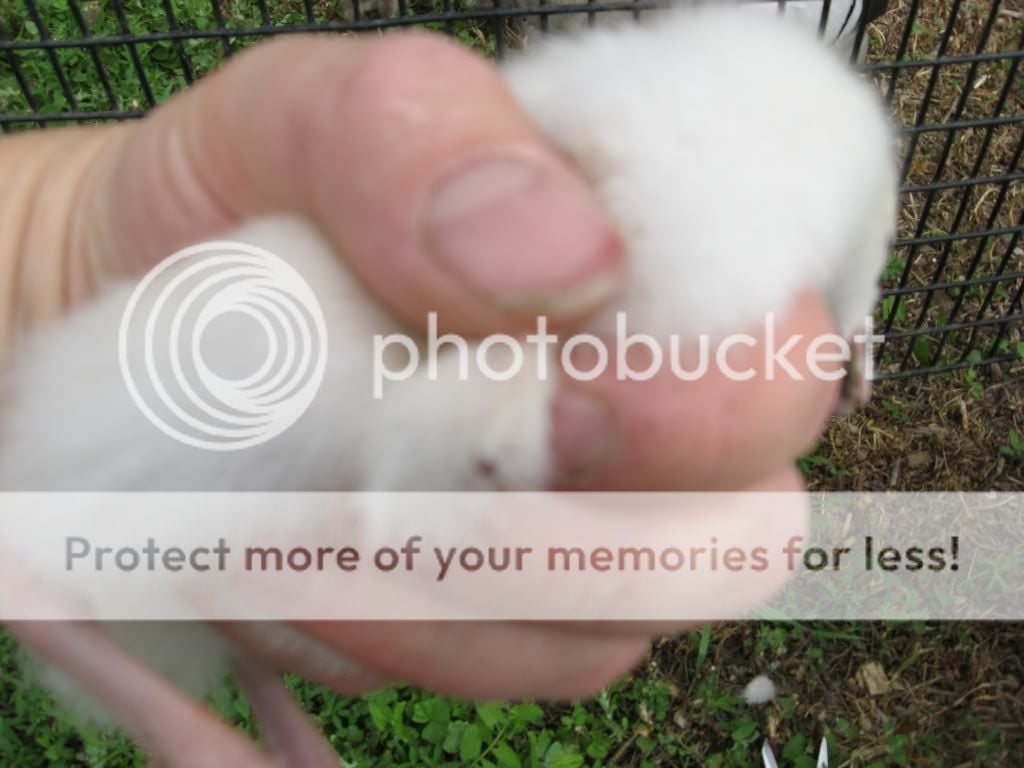we are helpful. fun, read your OP AGAIN
Navigation
Install the app
How to install the app on iOS
Follow along with the video below to see how to install our site as a web app on your home screen.
Note: This feature may not be available in some browsers.
More options
You are using an out of date browser. It may not display this or other websites correctly.
You should upgrade or use an alternative browser.
You should upgrade or use an alternative browser.
exotic duck question??
- Thread starter signaturefarm
- Start date
- Sep 24, 2010
- 2,199
- 81
- 239
Removing half of a birds wing at the wing joint would be the same as removing half of an arm at the elbow. It's simply science speaking and anatomical comparisons, so yeah, Scientifically speaking, pinioniong would be the same as me cutting half your arm off.
I never said it didn't hurt them to be fixed I just stated that it wasn't a good comparison. My cat is spayed and my dog is neutered.
I'm just young and dumb, though so I guess I must not know anything.
My OP was short and simple and not meant to offend anyone. I was simply stating what I thought. Given it was a bit dramatic, but it was not intended to be rude.
I do enjoy this forum most of the time and i don't enjoy stirring up an argument. I was simply trying to have fun and express my opinion. If you think that was a bad post I appologize. I was not trying to start a fight and I'm sorry I did.
You were helpful and I'm sorry I offended you all, but you offended me as well.
I never said it didn't hurt them to be fixed I just stated that it wasn't a good comparison. My cat is spayed and my dog is neutered.
I'm just young and dumb, though so I guess I must not know anything.
My OP was short and simple and not meant to offend anyone. I was simply stating what I thought. Given it was a bit dramatic, but it was not intended to be rude.
I do enjoy this forum most of the time and i don't enjoy stirring up an argument. I was simply trying to have fun and express my opinion. If you think that was a bad post I appologize. I was not trying to start a fight and I'm sorry I did.
You were helpful and I'm sorry I offended you all, but you offended me as well.
Last edited:
Look, lets start over. everybody has an opinion. Just say it but leave off the part about cutting my arms off with shears.
 Then nobody would be upset. that being said we understand how you feel about pinioning. But,you will find on here we mostly go against your opinion,Sorry. but if you have any more questions me and others on here will try to help you
Then nobody would be upset. that being said we understand how you feel about pinioning. But,you will find on here we mostly go against your opinion,Sorry. but if you have any more questions me and others on here will try to help you



- Sep 24, 2010
- 2,199
- 81
- 239
I can see that everyone's opinions are different from mine. That was entirely obvious to me.
I never said I was cutting your arm off with shears. I was just making a comparison. You just took it that way. Think about it. Would I really want to do that?
I was just comparing the duck's feelings to your own by putting you in the duck's situation there's a big difference.
Sorry you took it like that, but that's not even what I said at all.
It was a comparison of two similar situations and nothing more.
I never said I was cutting your arm off with shears. I was just making a comparison. You just took it that way. Think about it. Would I really want to do that?
I was just comparing the duck's feelings to your own by putting you in the duck's situation there's a big difference.
Sorry you took it like that, but that's not even what I said at all.
It was a comparison of two similar situations and nothing more.
Last edited:
- Thread starter
- #15
OMG!!! I did not meat to start an argument. just wanted peoples opinion if birds would stay or go that were not pinioned or clipped. If I caged them for some time and then turned them out with my calls.. I wanted to know other peoples experience..
I have no opinion on either pinioning or pulling feathers. There is cruelty in all. Cutting off combs,cutting dew claws off,docking tails, toe punching etc etc. But just to say. You can pinion a bird with a local or sedative just like spaying or neutering and they will not feel a thing.
But WOW guys... We do not have to argue... Just wanted some info...
I have no opinion on either pinioning or pulling feathers. There is cruelty in all. Cutting off combs,cutting dew claws off,docking tails, toe punching etc etc. But just to say. You can pinion a bird with a local or sedative just like spaying or neutering and they will not feel a thing.
But WOW guys... We do not have to argue... Just wanted some info...
Quote:
Sumatra-
Please post photos of this technique being done!
Sumatra-
Please post photos of this technique being done!
Last edited:
- Thread starter
- #17
Didn't strike any never here.. Everyone has their own concepts...
- Aug 9, 2010
- 5
- 0
- 6
Most of them will stay if they are pinioned.
sumatra,
let me clear up a few quick things,
Obviously, you have never pinioned or seen a bird being pinioned. From what you have described in your technique, you are removing tons more flesh than any day old bird being pinioned.
The act of pinioning waterfowl is REQUIRED by the Federal Government, that or removal of a hind toe, seemless bands, or tattoos the last 2 virtually no one does on a regualr basis.
Here's how it's done, after the duckling drys off, all you do it snip the VERY TIP joint (the hand section) off, NOT half the wing. At this point, all it is a a tiny piece of skin, no bones what so ever in it. As Spectrum mentioned, they dont bleed, they dont scream, they just sit there, get snipped and return to the brooder.
Plain and simple, not a thing cruel about it, and like I said, for migratory species it is 1 of the required marking techniques for captive reared birds anyway, the other most common is the hind right toe, so one way or the other, something has to be snipped off of them.
As for the why do they have to be caught up before the molt, well, they arent all going to do it at once, and if you miss one, they will be able to fly off then.
Also, for the primaries, due to lack for flight in the molt, their molt for flight feathers is very fast so they can get back to flying, so it's essential to pen them during this time frame.
But lets all be honest, on an open 1 acre pond, you will never, NEVER catch a single one of them again, much less all of them, so permanent pinioning is the only option in this case. Even if you did get close to catching one, it would just dive at the last second and come up 100 yards away. I have kept thousands of these myself over the years, and they are hard enough to catch in a enclosed pen.
In addition, your concept of removing just a "FEW " of the primary flight feather folicals, WILL NOT stop a duck from flying, you have to get all of them on one side, even if you pinion too short, they can stil get a good lift off. So in order for your method to be successful, you would physically have to remove the entire folical section of the tip of the wing anyway. Now at a day old, how can you tell me where to cut. You have mentioned 1/4 " to 1" of removal for just a few, you'd be talking 3-5 inches for an adult bird now, so. Chill, back up, and think about what you are saying, a tiny peice of fuz, 1/8" to 3/8" long, with no bone, and virtually no muscle is all you remove on day old birds for pinioning. Can you please tell me how that's worse than what your "humane" way is?? I belive you need to experience doing this first before you get so defensive about it. From your first few post you made, it sounds like you have have never done either, but are just going off things you have been told by others.
let me clear up a few quick things,
Obviously, you have never pinioned or seen a bird being pinioned. From what you have described in your technique, you are removing tons more flesh than any day old bird being pinioned.
The act of pinioning waterfowl is REQUIRED by the Federal Government, that or removal of a hind toe, seemless bands, or tattoos the last 2 virtually no one does on a regualr basis.
Here's how it's done, after the duckling drys off, all you do it snip the VERY TIP joint (the hand section) off, NOT half the wing. At this point, all it is a a tiny piece of skin, no bones what so ever in it. As Spectrum mentioned, they dont bleed, they dont scream, they just sit there, get snipped and return to the brooder.
Plain and simple, not a thing cruel about it, and like I said, for migratory species it is 1 of the required marking techniques for captive reared birds anyway, the other most common is the hind right toe, so one way or the other, something has to be snipped off of them.
As for the why do they have to be caught up before the molt, well, they arent all going to do it at once, and if you miss one, they will be able to fly off then.
Also, for the primaries, due to lack for flight in the molt, their molt for flight feathers is very fast so they can get back to flying, so it's essential to pen them during this time frame.
But lets all be honest, on an open 1 acre pond, you will never, NEVER catch a single one of them again, much less all of them, so permanent pinioning is the only option in this case. Even if you did get close to catching one, it would just dive at the last second and come up 100 yards away. I have kept thousands of these myself over the years, and they are hard enough to catch in a enclosed pen.
In addition, your concept of removing just a "FEW " of the primary flight feather folicals, WILL NOT stop a duck from flying, you have to get all of them on one side, even if you pinion too short, they can stil get a good lift off. So in order for your method to be successful, you would physically have to remove the entire folical section of the tip of the wing anyway. Now at a day old, how can you tell me where to cut. You have mentioned 1/4 " to 1" of removal for just a few, you'd be talking 3-5 inches for an adult bird now, so. Chill, back up, and think about what you are saying, a tiny peice of fuz, 1/8" to 3/8" long, with no bone, and virtually no muscle is all you remove on day old birds for pinioning. Can you please tell me how that's worse than what your "humane" way is?? I belive you need to experience doing this first before you get so defensive about it. From your first few post you made, it sounds like you have have never done either, but are just going off things you have been told by others.
Last edited:
PINIONING- how I do it.
Hold bird and place the joint (the joint closest to the tip of the wing or wirst joint on a person) of the wing between your thumb and finger.

Use a sharp scissors or toe nail clippers to remove the end of the wing. With the "joint" between your thumb and finger, cut next to your fingers. This way you are not cutting into the joint BUT slightly to the outside of it.

Some birds may get a drop of blood which will not hurt. If babies are older they will bleed a little and corn starch can held on the wing tip firmly for several seconds to help clot.

Babies minutes after being pinioned back with Dad & Mom- (note no bleeding & back at ease, so very little stress)

NOTE: I recomend holding the joint between the fingers and cutting next to them so you miss cutting in the joint BUT also so you do not cut to far out towards the tip. You want to cut just to the outside of the joint. Birds with just the very tip removed will still grow enough flight feathers that they can fly.
Hold bird and place the joint (the joint closest to the tip of the wing or wirst joint on a person) of the wing between your thumb and finger.

Use a sharp scissors or toe nail clippers to remove the end of the wing. With the "joint" between your thumb and finger, cut next to your fingers. This way you are not cutting into the joint BUT slightly to the outside of it.

Some birds may get a drop of blood which will not hurt. If babies are older they will bleed a little and corn starch can held on the wing tip firmly for several seconds to help clot.

Babies minutes after being pinioned back with Dad & Mom- (note no bleeding & back at ease, so very little stress)

NOTE: I recomend holding the joint between the fingers and cutting next to them so you miss cutting in the joint BUT also so you do not cut to far out towards the tip. You want to cut just to the outside of the joint. Birds with just the very tip removed will still grow enough flight feathers that they can fly.
Last edited:
New posts New threads Active threads
-
Latest threads
-
Hi All! New to chickens and excited to be here
- Started by tgulis
- Replies: 2
-
-
-
-
What is wrong with my roosre's comb?
- Started by Grondel Farm
- Replies: 4
-
-
Threads with more replies in the last 15 days
-
Open Contest November Nuttiness, a Random Funny Posting Contest—Official 2025 BYC Mini-Contest
- Started by muddy75
- Replies: 158
-
Open Contest Pets with Paws Photo Contest—Official 2025 BYC Mini-Contest
- Started by oldhenlikesdogs
- Replies: 153
-
Open Contest Miss BYC Beauty Pageant—Official 2025 BYC Mini-Contest
- Started by thecatumbrella
- Replies: 131
-
Open Contest Funny Poultry Faces & Poses Photo Contest—Official 2025 BYC Mini-Contest
- Started by azurbanclucker
- Replies: 107
-
Rainforest plants theme 🌱🌳 frizzle bantam hatch along
- Started by Cheekychook12
- Replies: 92
-
×

